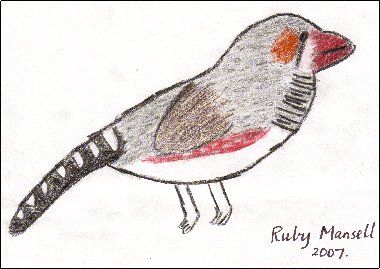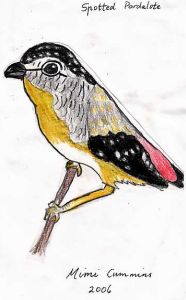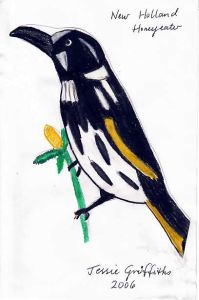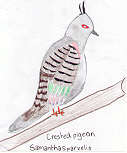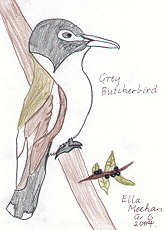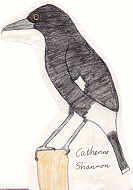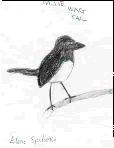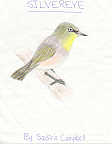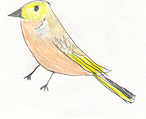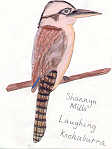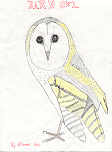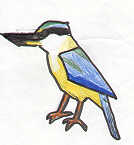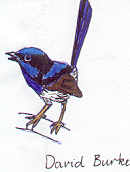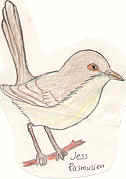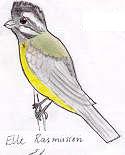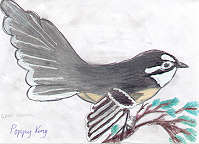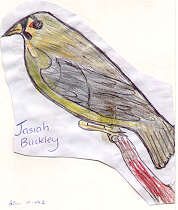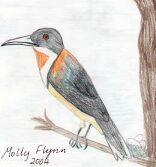AUSTRALIAN RAVEN
Corvus coronoides
Common, large (600mm - 24") black bird found from Townsville (Qld) through south-eastern Australia, and southern South Australia to Eyre Peninsula; also in southern Western Australia and Tasmania.
Prefers open country where it spends most of the day, returning to the timbered areas at dusk. The call-note, usually uttered during flight, is a loud and deep "Gwar-gwar-gwar-r", varied at times in a softer "Wa-a-ah". This species is omnivorous but prefers the flesh of animals.
Lays four to six eggs in a large, open, rather deep nest composed of sticks and twigs, and lined with grass and wool; usually placed in the forked branches of a tall tree. Breeding season is June to December.
Illustration by Zac Bratcher |
Play the little* raven
(Corvus mellori) call. 72kb
*until I get an
Australian Raven call. (SB)
 |
